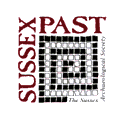Sussex Archaeological Collections: Relating to the history and antiquities of the counties of East and West Sussex
Sussex Archaeological Society, 2000. (updated 2022) https://doi.org/10.5284/1000334. How to cite using this DOI
Data copyright © Sussex Archaeological Society unless otherwise stated
This work is licensed under the ADS Terms of Use and Access.
Primary contact
Jaime
Kaminski
Sussex Archaeological Society
Barbican House
169 High Street
Lewes
BN8 1YE
Resource identifiers
- ADS Collection: 285
- DOI:https://doi.org/10.5284/1000334
- How to cite using this DOI
Prelude to Piltdown
Charles Dawson's Origins, Career and Antiquarian Pursuits, 1864-1911, and their Repercussions
by JOHN H FARRANT
Towards the end of his life Charles Dawson (1864-1916), amateur palaeontologist and antiquary, discovered the remains of Piltdown Man and since 1953 has been heavily implicated in their fabrication. On him in that connection much has been written, but little has been published on his earlier life with adequate documentation. Drawing on sources not previously used, this article describes his family background, upbringing and fossil collecting, and his career as a solicitor, and explores his antiquarian pursuits in Sussex, particularly his association with Hastings Museum and with the Sussex Archaeological Society (including the society's ejection from Castle Lodge), his excavations at Hastings Castle and the Lavant caves, the Beauport Park statuette, the Pevensey Roman bricks, his History of Hastings Castle and his attempt to thwart L. F. Salzman's election to the Society of Antiquaries. The antiquarian phase of Dawson's research career was neatly bracketed by A. S. Woodward's publication in 1891 and 1911 of his successive finds of Plagiaulax dawsoni.
These antiquarian pursuits show his enormous energy and charm, occasional disingenuous conduct, and the facility with which he moved between West End society and Sussex labourers, an important source of his finds. As a well-known collector he may have accepted, and attempted to exploit, items of doubtful authenticity, but his recording of provenance was reasonable by contemporary amateur standards. He actively used the press, local and London, to boost his reputation. But his failure to conceal the limits of his scholarship in his History of Hastings Castle of 1910 contributed to his reverting to palaeontology.
A face-saving account of the 'Castle Lodge episode' of 1903, doubts emerging in 1914 about the finds from the Lavant caves, and Salzman's antipathy for Dawson on account of the Pevensey bricks (1907) and his canvassing the Antiquaries (1911), may all have contributed to Piltdown Man being disregarded by the Sussex Archaeological Society. But they cannot of themselves have outweighed the advocacy by Woodward, Dawson's collaborator at Piltdown, who was active in the society between 1924 and 1943. The implication is that there were doubts expressed locally, but only informally, about the authenticity of Piltdown Man.
Five appendices have been placed on the Archaeological Data Service's website.





